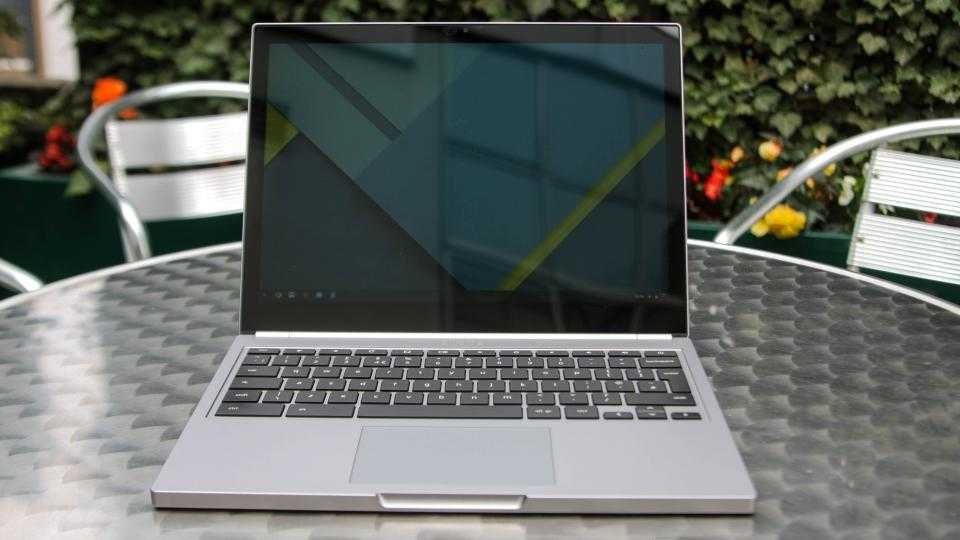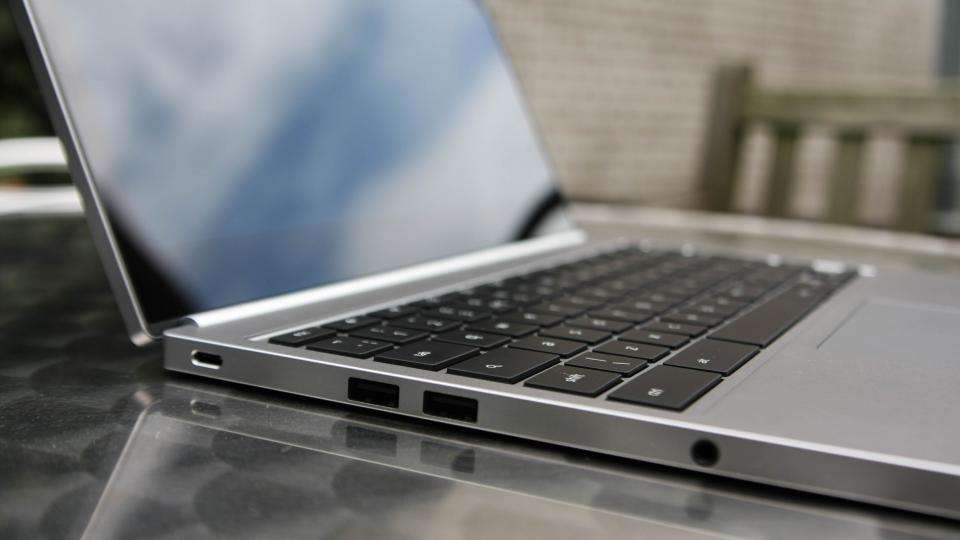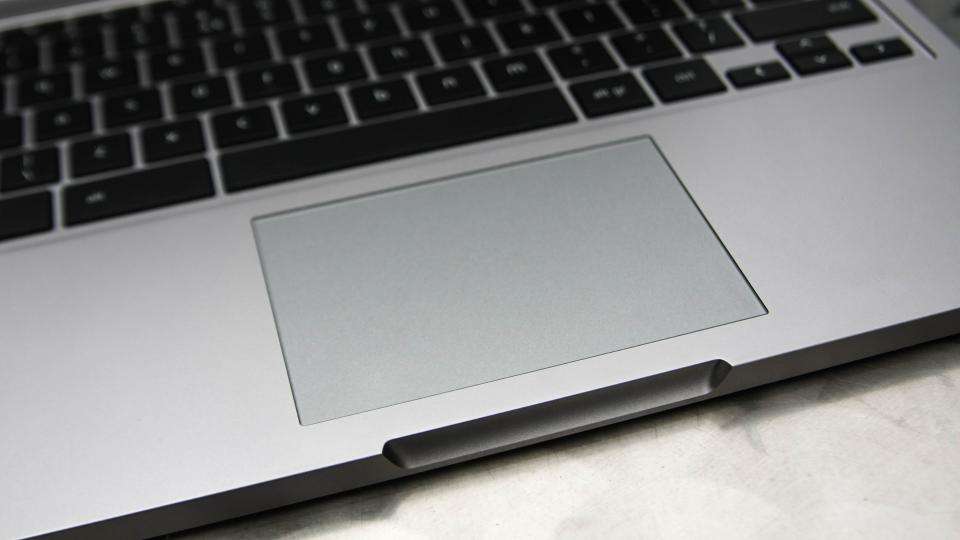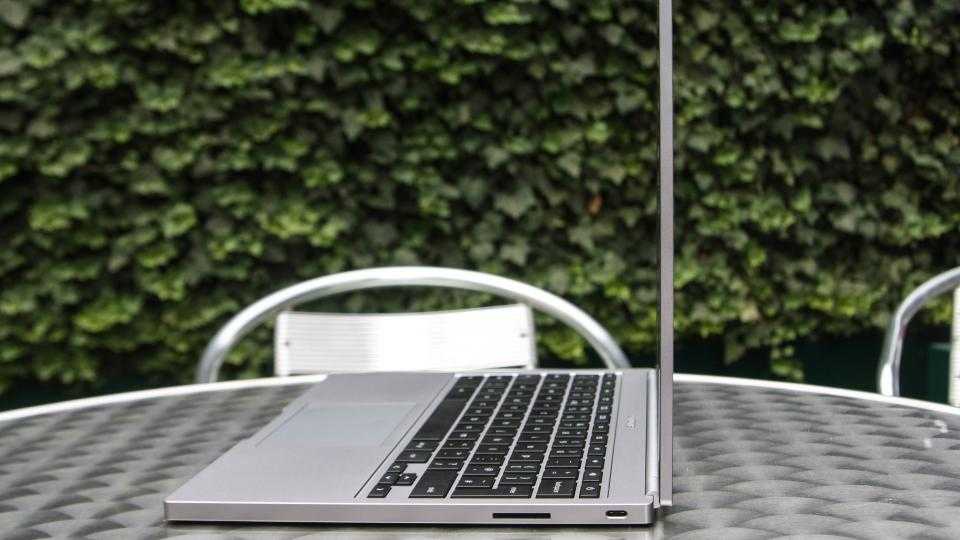The Chromebook Pixel is the torchbearer for all Chromebooks, a shining example of how stunning Chrome OS-powered laptops can be. Yet it's only available directly from Google, as if the company knows it doesn’t really fit with the typical barebones Chromebook mantra. The follow-up builds upon many things that made the first Pixel such a desirable piece of technology, and while you still can't head to a shop to try before you buy, it tackles many of the issues we had with the original model.

While it’s not the thinnest laptop at 15.3mm, the Pixel is still reasonably svelte, and 1mm thinner than its predecessor. Weight has remained the same at a shoulder-friendly 1.5kg, making it comfortable enough to carry around. The sharp edges and corners might look a little utilitarian, but we were quite fond of the clean design – you'll need to look inside before you see any Chrome logos.
Comparisons with Apple's MacBook are hard to avoid, particularly because both use the new USB Type-C connector, although where Apple makes do with a single port, the Pixel has two. With one on each side of the laptop, you can choose which side to run your power cable. The multipurpose Type-C connection can also carry video, but you’ll need an optional Type-C to DisplayPort or HDMI adaptor (£25 each from store.google.com ).
The Pixel also has two USB ports, so your existing devices are supported as well. An SD card reader lets you expand the 32GB of onboard storage, in case you need local storage in addition to the 1TB of free cloud storage on offer through Google Drive for buying the Pixel. SD cards sit flush to the chassis when inserted, so you can leave it permanently attached.

Google Chromebook Pixel review: Touchscreen Display
The 12.9in, 2,560x1,700 resolution touchscreen display is undeniably the Pixel's crowning feature. Google has retained the slightly unorthodox 3:2 aspect ratio, which is distinctly boxier than the widescreen 16:9 laptop screens we're used to, although it's very well suited to web browsing. The high resolution is at its best when displaying highly detailed images, but you may need to experiment with Chrome OS' internal resolution settings to find a level that is comfortable. We found 1,440x956 a happy compromise, and because this only affects the UI text and menus are still perfectly smooth.
Image quality was impressive, for the most part. An sRGB colour accuracy coverage score of 91.6% is fantastic, and we measured black levels at a very low 0.24cd/m2. A contrast ratio of 800:1 is above average, too.
The reflective Corning Gorilla Glass also didn't help, although it does protect the display from scrapes and scratches when you're using multi-touch touchscreen gestures. The coating is pleasant to the touch and the screen's piano hinge was rigid enough to withstand all of our prodding.
Google Chromebook Pixel review: Touchpad and Keyboard
The large touchpad is just as delightful to use, with a glass-coated surface that has just the right level of resistance. The gesture shortcuts built in to Chrome OS make great use of the touchpad, letting you navigate backwards and forwards in Chrome with a two-finger horizontal swipe or change tabs with a three-fingered swipe. A fun animation even appears as you drag between two web pages as though they were two physical pages on a stack. You rarely have to take your fingers away from the touchpad except, oddly, to zoom in and out. Pinch to zoom only works when you use the touchscreen.
The keyboard is also fantastic, with Chiclet keys that are sensibly spaced apart and comfortable to type on for long periods. By default, the Caps Lock key is replaced with a search shortcut. You can change it back to Caps Lock through the settings menu, but the physical marking on the keyboard will always be a magnifying glass.

The backlit keys only illuminate when you're actually using the keyboard, then fade away when you remove your hands, meaning you aren't distracted when you're watching videos. It’s a feature you suddenly miss when moving to other backlit keyboards. Google Chromebook Pixel review: Processor, Performance and Chrome OS
The Pixel is available with either a 2.2GHz Intel Core i5-5500U and 8GB of memory (£799), or a 2.4GHz Intel i7-5500U with 16GB of memory (£999). We reviewed the former, but at no point did the Pixel feel sluggish enough to warrant the added expense of the i7 model. Chrome OS’ plethora of animations and flourishes were delivered smoothly and even media-heavy web pages filled with animated GIFs and videos loaded swiftly. The Pixel also managed a SunSpider browser test speed of 196ms, which is the fastest we’ve seen from a Chromebook.
The real question is whether you need this much power given the limits of the operating system. Chrome OS is lightweight and runs almost entirely through the Chrome web browser. There is a Desktop of sorts, but apart from the file manager (useful for transferring photos from USB flash drives and SD cards) almost all the shortcuts open web apps rather than standalone programs. It's perfectly suited to web browsing, editing Google documents and other basic tasks, but most of the software you're familiar with simply isn't available. Many services are now adopting web-based alternatives, but you might find these still don't work; Skype reported that its audio and video services were incompatible with Chrome OS.
Google Chromebook Pixel review: Battery Life
At least the processor isn't a drain on the battery. We managed an impressive 10 hours 53 minutes of video playback, but stick to web browsing and it will last even longer. Plugging in for just 15 minutes will provide up to two hours of battery, thanks to the USB3 Type-C connection.
Keeping an eye on the Pixel’s charge level is also strangely pleasing. LEDs integrated into the lid glow in Google’s familiar colours when the Pixel is turned on, but with the lid shut it becomes a battery gauge. A simple double tap on the lid makes the LEDs glow in 25% increments. It’s a simple yet delightful design flourish.

Google Chromebook Pixel review: Conclusion
There’s an awful lot to like about the Chromebook Pixel, with excellent design and long battery life making it a joy to use. Yet while Chrome OS feels slick and responsive, it’s also the Pixel’s greatest weakness. You’ll likely find yourself forced to work within the limitations of what’s available on Chrome OS, and for £799 this is likely too great a sacrifice.
The Pixel is by far the best Chromebook to date, but you’ll have to be able to live harmoniously with the operating system before parting with your cash. If it doesn't suit your needs then check out our Best laptops and buying guide .
|
Core specs |
|
Processor |
Dual-core 2.2GHz Intel Core i5-5500u |
|
RAM |
8GB |
|
Memory slots (free) |
None |
|
Max memory |
16GB |
|
Size |
297.7x224.6x15.3mm |
|
Weight |
1.5kg |
|
Sound |
Realtek HD Audio (3.5mm headset port) |
|
Pointing device |
Touchpad |
|
Display |
|
Screen size |
12.9in |
|
Screen resolution |
2,560x1,700 |
|
Touchscreen |
Yes |
|
Graphics adaptor |
Intel HD Graphics 5500 |
|
Graphics outputs |
DisplayPort, HDMI (through adaptor) |
|
Graphics memory |
Integrated |
|
Storage |
|
Total storage |
32GB SSD |
|
Optical drive type |
None |
|
Ports and expansion |
|
USB ports |
2x USB Type-C, 2x USB3 |
|
Bluetooth |
Yes |
|
Networking |
802.11ac (dual-band) Wi-Fi |
|
Memory card reader |
SD |
|
Other ports |
None |
|
Miscellaneous |
|
Operating system |
Chrome OS |
|
Operating system restore option |
Restore partition |
|
Buying information |
|
Parts and labour warranty |
Two years RTB |
|
Price inc VAT |
£799 |
|
Details |
store.google.com |
|
Supplier |
store.google.com |
|
Part number |
Chromebook Pixel |
